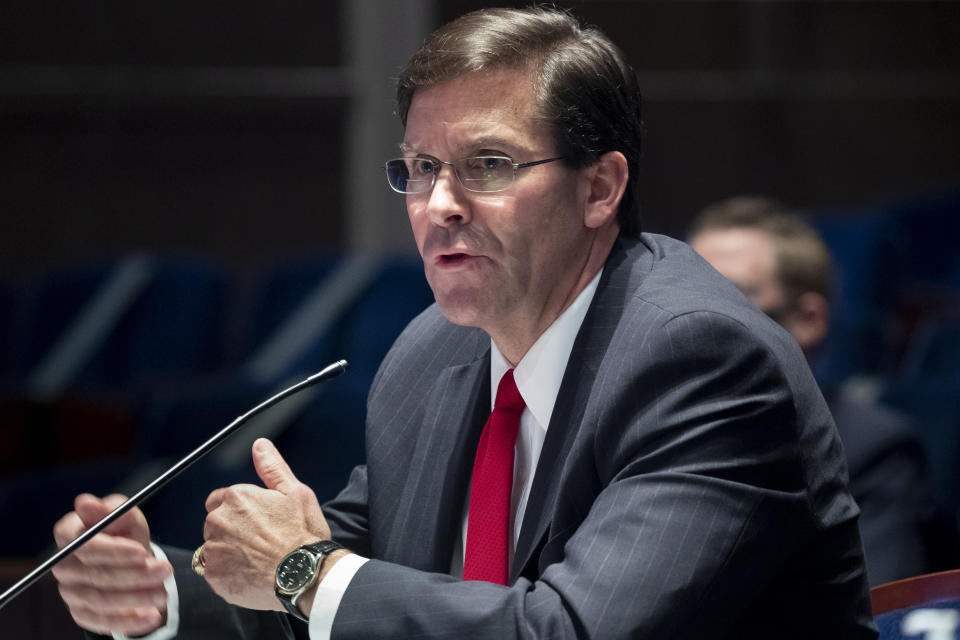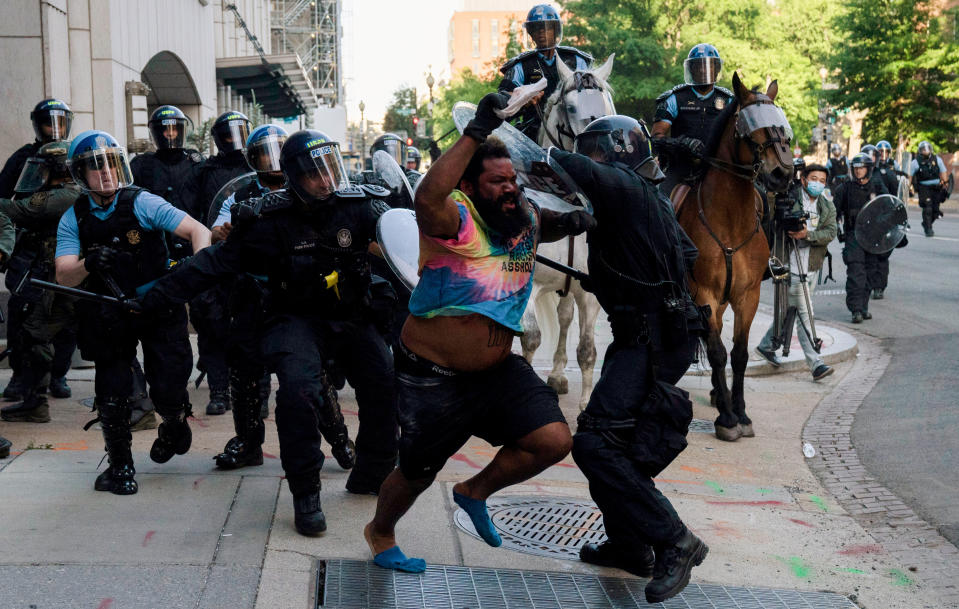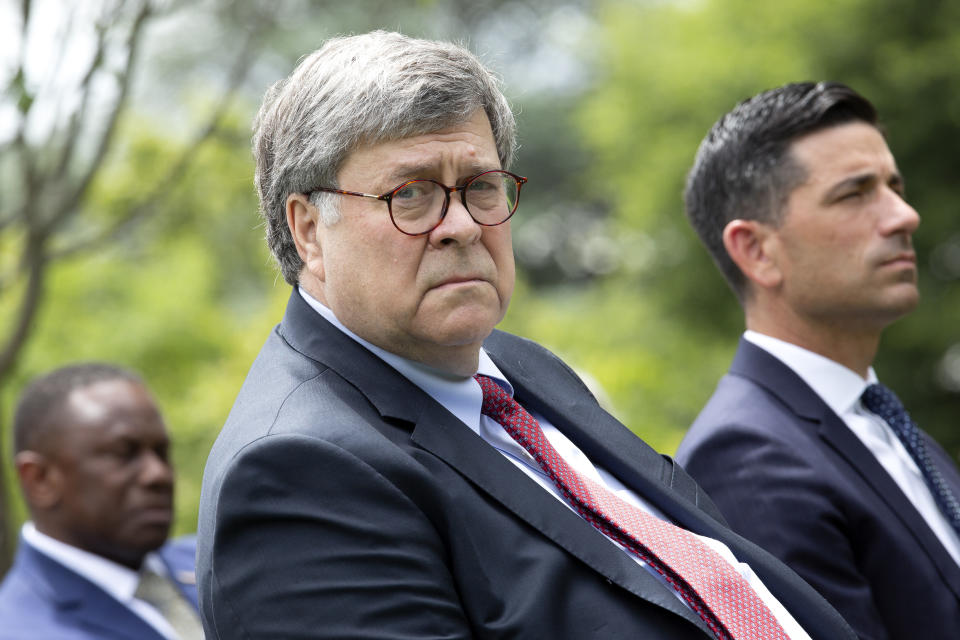'Still unclear' who ordered action against protesters at Lafayette Park, defense secretary says
WASHINGTON — Defense Secretary Mark Esper told Congress on Thursday he did not know who gave the widely denounced order to clear peaceful antiracism protesters from Lafayette Park, across the White House, early last month.
“It’s still unclear to me who gave the direction to clear the park at that moment in time,” Esper told the House Armed Services Committee, in a hearing on how the authority of the military overlaps with that of civilian law enforcement agencies.

The committee’s chairman, Rep. Adam Smith, D-Wash., expressed incredulity at that revelation.
“See, I find that hard to believe,” Smith told Esper. “I’m sorry, but it’s like a pretty big decision, a lot of people there, everyone’s there, and it just sort of happened?”
In the last days of May, protesters convened across White House — as they did in cities across the nation — to protest the killing of George Floyd, an unarmed Black man, by Minneapolis police, as well as broader issues of racism in American society. Episodes of looting and violence occurred amid the largely peaceful protests, with law enforcement in some cases responding with excessive force against demonstrators.
At one point on May 29, a Friday, protesters breached a protective barrier near the White House, and President Trump and his family had to be moved into a secure bunker. Ever sensitive to displays of weakness, Trump was reportedly furious that his foray there was revealed to the press.
On June 1, a Monday, he and top administration officials aimed to project a show of strength. On a call with governors that day about the protests, Esper urged them to “dominate the battle space,” a term he has since expressed regret about using.

As evening approached, Trump spoke from the Rose Garden, eager to push back on any suggestion that he had been intimidated by the thousands who had captured worldwide attention with cries of racial justice, and end to police violence and, frequently, strong criticisms of the president himself. “I am your president of law and order, and an ally of all peaceful protesters,” Trump said.
But only minutes later, Park Police and other law enforcement agencies, including the Secret Service, moved to clear peaceful protesters from Lafayette Park, using tear gas or other chemical agents to do so. Video of the chaotic scene shows officers swinging shields and batons, dispersing the protesters in what appeared to most people to be a blatant contravention of the First Amendment freedom of assembly.
Esper acknowledged to the House Armed Services Committee that the National Guard was present on the scene, but said that it played only a “static role” and did not take part in the controversial clearing. "The Guard did not advance on the crowd,” he told lawmakers.
But under questioning, Esper could not say who had given the order for the National Guard to take even that limited role.
The reason for the clearing soon became apparent, as President Trump walked to St. John’s Church, which sits on the edge of Lafayette Park and whose basement had been burned the night before. Trump was flanked by Esper, Chairman of the Joint Chiefs of Staff Mark Milley, Attorney General William Barr and other top administration officials. At St. John’s — known as “the church of the presidents” — Trump posed awkwardly with a Bible before quickly leaving.

The event was quickly denounced, including by some Republicans, as a blatantly unconstitutional stunt, and Esper and Milley were both heavily criticized for seeming to give the clearing of the park the imprimatur of U.S. armed forces, which are not supposed to participate in domestic affairs.
Especially stinging was the rebuke of retired Gen. James Mattis, who preceded Esper as the defense secretary and who wrote, “We must reject any thinking of our cities as a ‘battlespace’ that our uniformed military is called upon to ‘dominate.’ At home, we should use our military only when requested to do so, on very rare occasions, by state governors.”
Since then, both Milley and Esper have tried to salvage their reputations. Milley has apologized for his role in the events of June 1, while Esper has claimed he did not know what was going to take place.
Yet as Thursday’s hearing demonstrated, questions linger about just who gave the order to disperse the protesters. In response to Rep. Smith, Esper professed a lack of curiosity on the subject. “I’ve never inquired, I’ve never pursued it with anybody,” he said.
“You get caught up in other things,” Esper added.
Some have thought the order came from Barr, who visited law enforcement officers amassing across the White House shortly before they started to push protesters back. Two days after the incident, White House press secretary Kayleigh McEnany said that Barr had, in fact, given the order to clear Lafayette Square.
Barr, however, has denied this. “I’m not involved in giving tactical commands like that,” the attorney general told the Associated Press.
Much like Esper, Milley said he had no insight into who gave the order. “I don’t know with certainty,” Milley said. But he did say that, earlier in the day, there had been “a planning session down at the FBI building. “The bureau is part of the Justice Department, which is headed by Barr. At that meeting, Milley said, “they divided up who was gonna do what to whom.”
He seemed to suggest, as Barr did to the AP, that a commander of the Park Police was responsible.

_____
Read more from Yahoo News:



